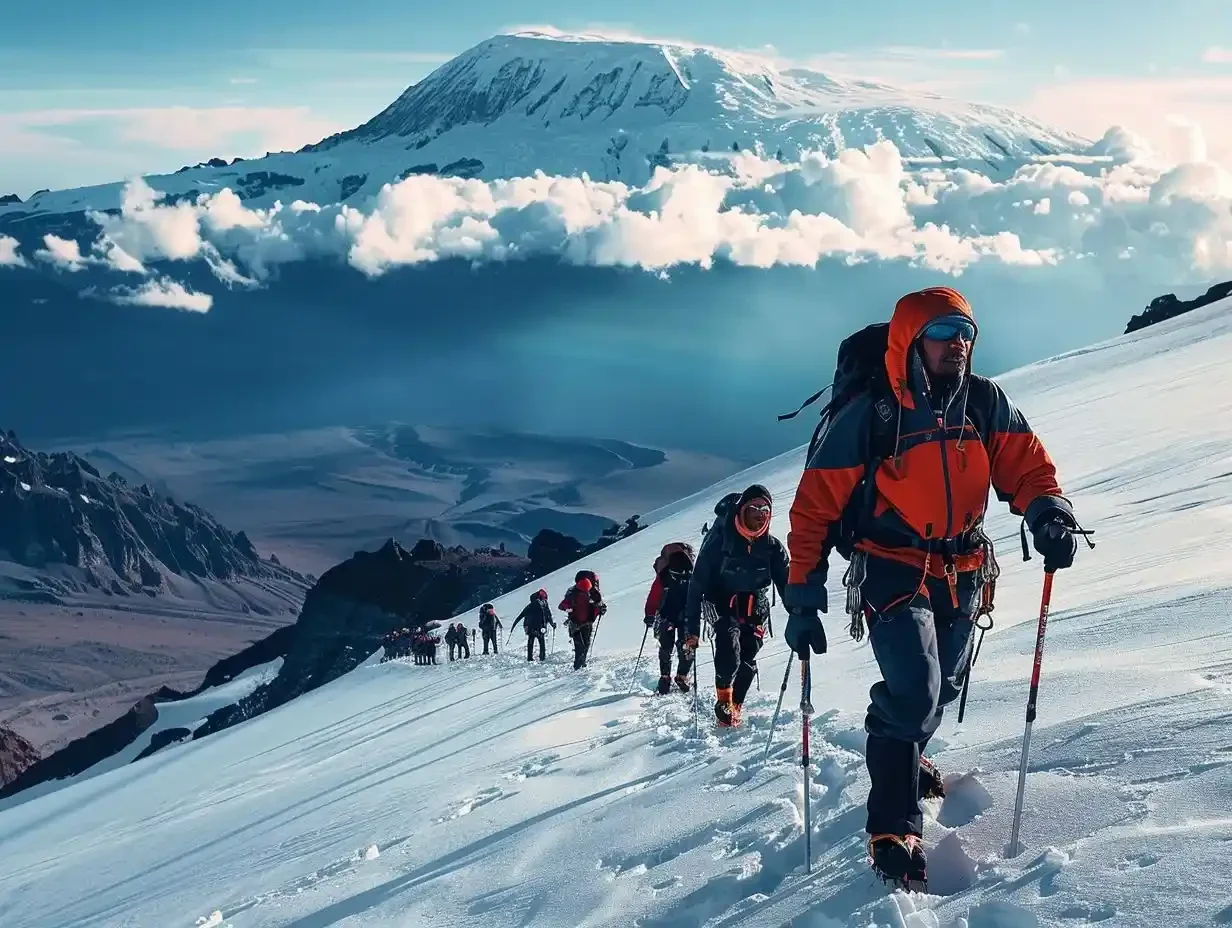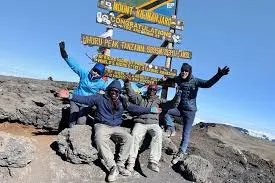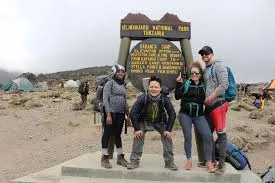How to Avoid Common Injuries on Kilimanjaro
To avoid common injuries on Kilimanjaro, focus on proper preparation and smart pacing. Wear well-fitted boots and break them in before the trek, use trekking poles to reduce knee strain, and stretch daily to stay limber. Listen to your body—rest if you feel pain or unusual fatigue, and stay hydrated to prevent cramps and altitude-related issues. Small habits like these go a long way in keeping you safe on the mountain. With Capable Africa Tours, learn how to avoid common injuries on Kilimanjaro through proper preparation, the right gear, and smart trekking habits. From choosing waterproof boots to mastering the “pole pole” pace, our expert guide covers everything you need for a safe 6–9 day trek across Kilimanjaro’s diverse terrains, from rainforest to arctic summit.
Plan Your Safe Kilimanjaro Trek Now
Why Injury Prevention is Critical for Kilimanjaro
Injury prevention is critical for Kilimanjaro because even minor strains or slips can quickly turn into serious problems at high altitude. Staying safe ensures you reach the summit, enjoy the trek, and avoid complications that could cut your adventure short. Simple precautions like proper footwear, pacing yourself, and using trekking poles make a huge difference. Common injuries like blisters, sprained ankles, knee pain, and altitude sickness affect up to 30% of climbers, according to Tanzania National Parks data. Capable Africa Tours emphasizes preparation, proper gear, and trekking techniques to minimize risks and ensure a safe, successful summit. Below, we outline the most common injuries and how to avoid them.
Common Injuries on Kilimanjaro
| Injury | Cause | Prevention | Impact |
|---|---|---|---|
| Blisters | Ill-fitting boots, wet feet | Broken-in boots, merino wool socks, liners | Pain, infection risk |
| Sprained Ankles | Uneven terrain, fatigue | Trekking poles, high-ankle boots | Limited mobility |
| Knee Pain | Steep descents, heavy packs | Trekking poles, knee braces, light packs | Reduced endurance |
| Altitude Sickness | Rapid ascent, low oxygen | Longer routes, hydration, Diamox | Headaches, nausea, evacuation |
| Sunburn | High UV exposure | SPF 50+, UV400 sunglasses, hat | Skin damage, discomfort |
How to Prepare Physically to Avoid Injuries
To prepare physically for Kilimanjaro and reduce the risk of injury, focus on building endurance, strength, and flexibility. Incorporate regular cardio exercises like hiking, running, or cycling to improve stamina, and add strength training for your legs, core, and back to handle steep climbs and heavy packs. Include balance and flexibility exercises, such as yoga or stretching routines, to prevent strains and improve mobility on uneven terrain. Gradually increase the intensity and duration of your workouts to mimic the demands of the trek. Below is a comprehensive guide to physical preparation that will help you climb safely and confidently during your 6–9 day Kilimanjaro trek with Capable Africa Tours. Capable Africa Tours recommends a mix of cardio, strength, and hiking practice to prepare for the 40–60km trek over 6–9 days.
Training Plan to Prevent Injuries
- Cardio (3–4 times/week): Run, cycle, or swim for 45–60 minutes to build endurance for 5–8 hour daily treks.
- Strength Training (2–3 times/week): Focus on legs (squats, lunges) and core (planks, Russian twists) to support steep climbs and descents.
- Hiking Practice (1–2 times/week): Walk 3–5 hours with a 5–7kg backpack on uneven terrain to mimic Kilimanjaro conditions.
- Balance Exercises: Single-leg stands or yoga improve stability, reducing ankle sprain risks on rocky trails.
- Altitude Simulation: Train at elevation (if possible) or use a stair climber to prepare for low-oxygen conditions.
Essential Gear to Prevent Injuries
To prevent injuries on Kilimanjaro, pack the right gear: sturdy, well-fitted hiking boots to support ankles, trekking poles to reduce knee strain, a quality backpack with proper weight distribution, layered clothing to manage temperature, and a reliable first-aid kit. These essentials keep you safe and moving comfortably. Capable Africa Tours provides gear rental options and expert advice to ensure you’re well-equipped.
Gear Checklist for Safety
| Item | Quantity | Purpose | Recommended Brands |
|---|---|---|---|
| Hiking Boots | 1 pair | Grip, ankle support | Salomon Quest 4 GTX, Merrell Moab |
| Trekking Poles | 2 | Stability, reduce joint strain | Black Diamond Trail Pro |
| Merino Wool Socks | 3–4 pairs | Blister prevention, warmth | Darn Tough, Smartwool |
| Backpack (30–40L) | 1 | Comfortable weight distribution | Osprey Talon, Deuter Speed Lite |
| UV Protection | 1 set | Prevent sunburn | Buff CoolNet, UV400 sunglasses |
Gear Tips
- Break in Boots: Wear new boots for 20–30 hours before the trek to prevent blisters.
- Use Trekking Poles: They reduce knee impact by 20–25%, per a 2023 hiking study.
- Pack Light: Keep your daypack under 7kg to avoid shoulder and back strain.
- Rent Heavy Gear: Save luggage space by renting sleeping bags or down jackets from Capable Africa Tours.
Watch: Staying Safe on Kilimanjaro
See how Capable Africa Tours helps trekkers avoid injuries with expert preparation and gear tips in this video guide.
Top Trekking Tips to Avoid Injuries
To minimize the risk of injuries on Kilimanjaro, maintain a steady pace, take regular breaks, and listen to your body’s signals. Warm up before each day’s hike, stretch gently, and strengthen key muscles through pre-trek exercises. Use trekking poles to reduce strain on knees, wear properly fitted boots, and adjust your backpack correctly to maintain balance. Pay attention to proper hydration and nutrition to keep energy levels steady. Below is a comprehensive list of top trekking tips to help you stay safe and injury-free during your 6–9 day Kilimanjaro trek with Capable Africa Tours.
Injury Prevention Techniques
- Go Slow (Pole Pole): Walk at a steady, slow pace to conserve energy and reduce fatigue-related missteps.
- Stay Hydrated: Drink 3–4L of water daily to prevent dehydration, which worsens altitude sickness.
- Use Proper Foot Placement: Step deliberately on uneven terrain to avoid twisting ankles.
- Monitor Altitude Symptoms: Report headaches, nausea, or dizziness to your guide immediately.
- Keep Feet Dry: Change socks daily and use gaiters to protect against mud and rain.
- Rest and Recover: Take short breaks every 1–2 hours to reduce muscle fatigue.
Altitude Sickness Prevention
Acute Mountain Sickness (AMS) affects 50% of climbers on shorter routes. To minimize risk:
- Choose a 7–9 day route (e.g., Machame or Lemosho) for better acclimatization.
- Take Diamox (125–250mg daily) if prescribed by a doctor.
- Monitor oxygen levels with pulse oximeters, used by Capable Africa Tours’ guides.
Climb Kilimanjaro Safely with Capable Africa Tours
Join Capable Africa Tours for a safe, injury-free Kilimanjaro adventure. Our experienced guides, comprehensive safety protocols, and gear rental options ensure you’re prepared for the summit. Book now for a worry-free trek!
- 98% summit success rate with expert guides
- Safety-first treks with daily health checks
- Gear rentals for sleeping bags, down jackets, and more
- Customizable 6–9 day routes for all fitness levels
- Eco-friendly climbs supporting local communities
Limited spots for Kilimanjaro treks — secure your safe climb today!
Plan Your Trek Now


